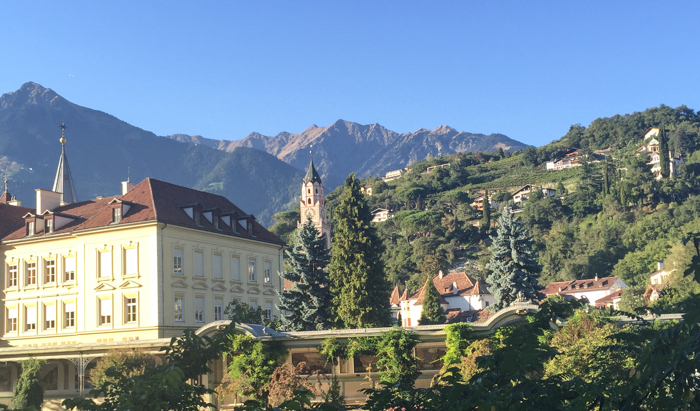 A favorite destination on our Bike the Wine Roads of Trentino-Alto Adige tour is the town of Merano, or Meran in German. It’s stunning location within a basin at the entrance of the Passeier Valley and the Val Venosta, surrounded by mountains topping out at over 3000 meters, offers a plethora of outdoor activities to keep us busy – cycling along the Val Venosta bike path, hiking along the Merano High Mountain Trail in the Texel Mountain group, climbing, and in the winter five different ski areas to explore. Afternoons bring us ample opportunity to explore the culture, history and cuisine of this vibrant town.
A favorite destination on our Bike the Wine Roads of Trentino-Alto Adige tour is the town of Merano, or Meran in German. It’s stunning location within a basin at the entrance of the Passeier Valley and the Val Venosta, surrounded by mountains topping out at over 3000 meters, offers a plethora of outdoor activities to keep us busy – cycling along the Val Venosta bike path, hiking along the Merano High Mountain Trail in the Texel Mountain group, climbing, and in the winter five different ski areas to explore. Afternoons bring us ample opportunity to explore the culture, history and cuisine of this vibrant town.
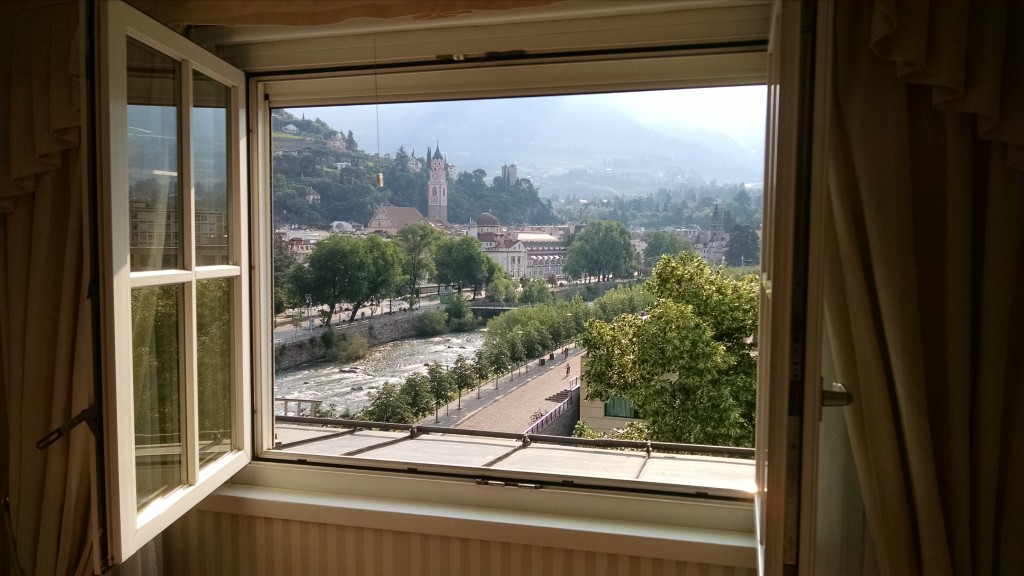 The enviable climate of Merano (over 300 days of sunshine a year) and its thermal springs have made it a prime vacation destination for many years, attracting luminaries such as Franz Kafka and Ezra Pound. Settled initially as a road station for the Romans in 15 BC, Merano was elevated to the status of a city during the 13th century and made the capital of Tyrol. In 1420, the Duke of Austria, Frederick moved the Tyrolean court to Innsbruck. Though Meran remained the official capital until 1848, it lost its predominant economic position, but its popularity as tourist destination especially for Germans and Italians, remains strong.
The enviable climate of Merano (over 300 days of sunshine a year) and its thermal springs have made it a prime vacation destination for many years, attracting luminaries such as Franz Kafka and Ezra Pound. Settled initially as a road station for the Romans in 15 BC, Merano was elevated to the status of a city during the 13th century and made the capital of Tyrol. In 1420, the Duke of Austria, Frederick moved the Tyrolean court to Innsbruck. Though Meran remained the official capital until 1848, it lost its predominant economic position, but its popularity as tourist destination especially for Germans and Italians, remains strong.
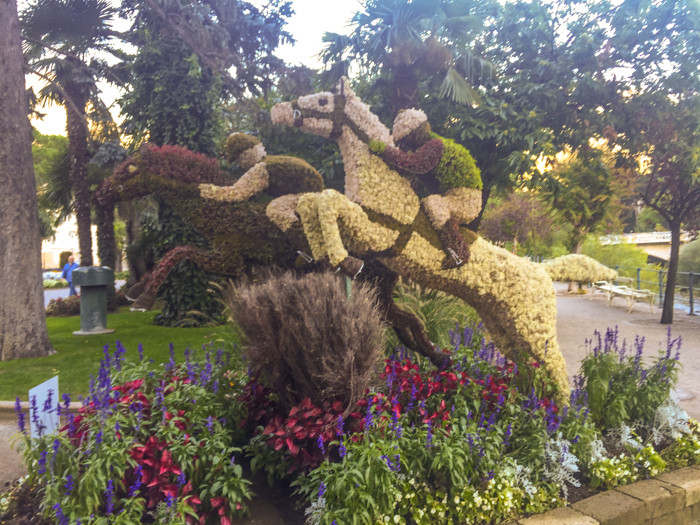 Thanks to its’ unique topology, Merano boasts the mildest winters in the entire central European area. The mild climate allows plants from Mediterranean areas to flourish alongside those from Alpine areas. This amazing diversity of flora can be admired in Merano’s beautiful gardens, including the botanical garden of Trauttmansdorff Castle, as well as the Kranzel Labrinth Gardens, ranking among some of loveliest gardens in the world, and giving Merano its monikeru of the “City of Flowers.”
Thanks to its’ unique topology, Merano boasts the mildest winters in the entire central European area. The mild climate allows plants from Mediterranean areas to flourish alongside those from Alpine areas. This amazing diversity of flora can be admired in Merano’s beautiful gardens, including the botanical garden of Trauttmansdorff Castle, as well as the Kranzel Labrinth Gardens, ranking among some of loveliest gardens in the world, and giving Merano its monikeru of the “City of Flowers.”
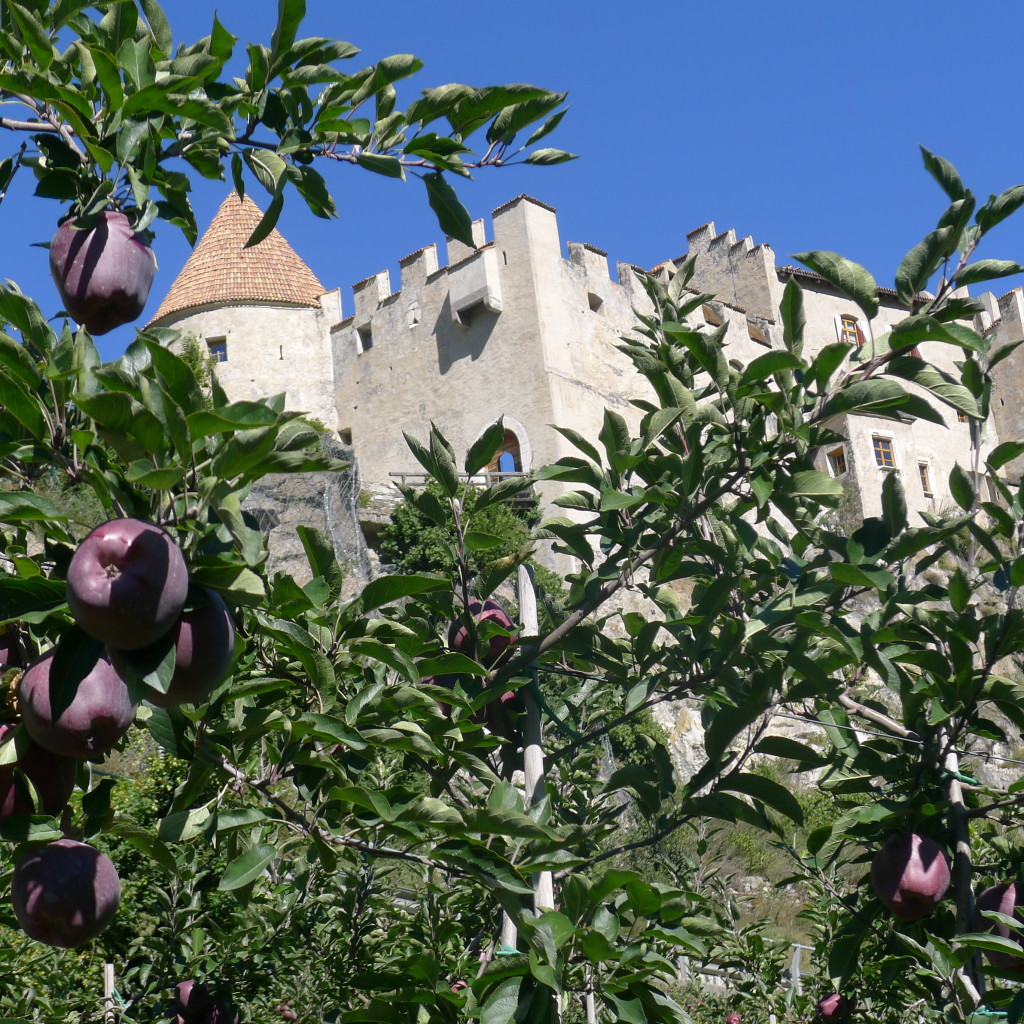 Sudtirol is also the European region with the highest number of castles, with over 800 castles, manor houses, and ruins. The oldest manors date to the early Middle Ages while the most recent date from the late Baroque period. One of the most important is Tyrol Castle, dating from the eleventh century, which now is home to the South Tyrol Museum of History and Culture. The densest concentration of castles and palaces in area can be found in two villages just south Merano, Tisens and Prissian, often referred to as ‘castle villages’, where many aristocratic families constructed summer homes here. There are seven castles here, making it a lovely spot for a walking tour or well worth a short detour from the bike path traveling from Merano to Bolzano.
Sudtirol is also the European region with the highest number of castles, with over 800 castles, manor houses, and ruins. The oldest manors date to the early Middle Ages while the most recent date from the late Baroque period. One of the most important is Tyrol Castle, dating from the eleventh century, which now is home to the South Tyrol Museum of History and Culture. The densest concentration of castles and palaces in area can be found in two villages just south Merano, Tisens and Prissian, often referred to as ‘castle villages’, where many aristocratic families constructed summer homes here. There are seven castles here, making it a lovely spot for a walking tour or well worth a short detour from the bike path traveling from Merano to Bolzano.
Merano is also known as the “beautiful fruit garden of the Alps”, where you can find apples, pears, apricots and many types of berries cultivated nearby. Honey, herbs, breads based on rye and other whole grains, Sudtirol speck and mountain cheese, spirits and brandies, beer. Here is where the Central European culinary tradition and alpine flavors meet the cuisine of the Mediterranean. Dine on traditional rich Tyrolean dishes, or enjoy more sophisticated versions reflecting inspiration from the south.
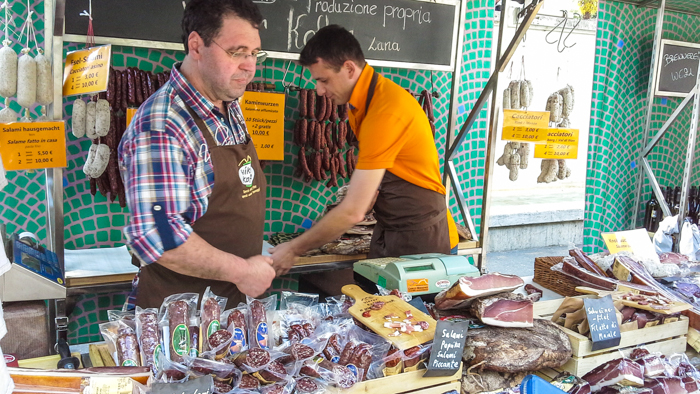 In this area of Italy, there are no over-sized shopping malls: local producers offer their wares and fresh seasonal products at markets year round. In Merano there is a large traditional Friday market, as well as several smaller farmers’ markets throughout the week. My favorite to visit before we start a tour is the market held Saturday mornings from 9.00 a.m. to 1.00 p.m on the upper Corso Liberta. Another great place to buy local products from speck to chestnut pasta and apples, a wide selection of local cheese and wines and freshly baked bread is Pur, at Corso della Liberta, 35. Enjoy a freshly made panini on their outdoor patio.
In this area of Italy, there are no over-sized shopping malls: local producers offer their wares and fresh seasonal products at markets year round. In Merano there is a large traditional Friday market, as well as several smaller farmers’ markets throughout the week. My favorite to visit before we start a tour is the market held Saturday mornings from 9.00 a.m. to 1.00 p.m on the upper Corso Liberta. Another great place to buy local products from speck to chestnut pasta and apples, a wide selection of local cheese and wines and freshly baked bread is Pur, at Corso della Liberta, 35. Enjoy a freshly made panini on their outdoor patio.
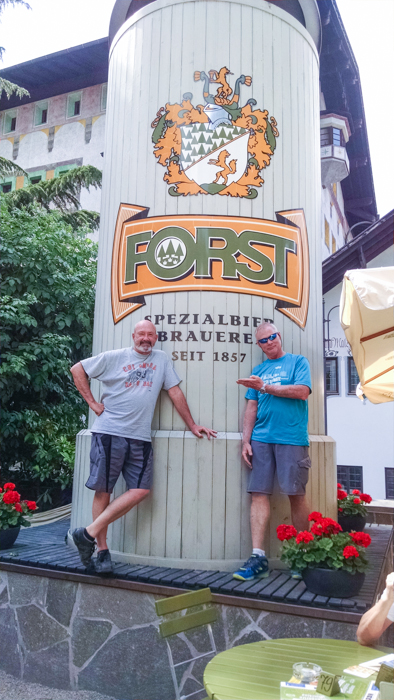 Terraced vineyards surround Merano, where a nice variety of both local and international varietals are cultivated, thanks again to the region’s mild Alpine-Mediterranean climate. The best way to discover this region is to taste a glass of one of the original indigenous varietals: try the traditional Vernatsch (Schiava in Italian), the intense Lagrein, or a St. Magdalena, a blend of both. White varietals that originally hail from this region are Gewurztraminer and Moscato Rosa. International varietals that flourish here include Pinot Nero/Noir, Sylvaner, Sauvignon, and Riesling, just to name a few. Northern climates in Italy also provide the barley and fresh mountain water perfect for brewing beer, so one last stop at Forst brewery for a crisp cold beer is a great way to end our ride.
Terraced vineyards surround Merano, where a nice variety of both local and international varietals are cultivated, thanks again to the region’s mild Alpine-Mediterranean climate. The best way to discover this region is to taste a glass of one of the original indigenous varietals: try the traditional Vernatsch (Schiava in Italian), the intense Lagrein, or a St. Magdalena, a blend of both. White varietals that originally hail from this region are Gewurztraminer and Moscato Rosa. International varietals that flourish here include Pinot Nero/Noir, Sylvaner, Sauvignon, and Riesling, just to name a few. Northern climates in Italy also provide the barley and fresh mountain water perfect for brewing beer, so one last stop at Forst brewery for a crisp cold beer is a great way to end our ride.
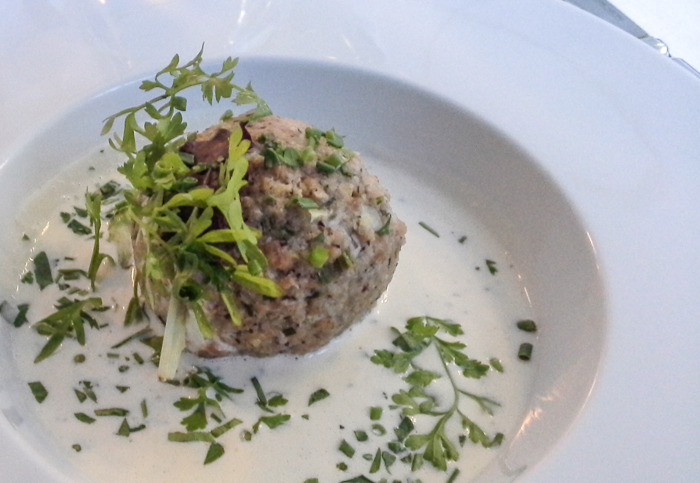
There are also plenty of wonderful restaurants where we can experience these great products and unique blend of cuisines found in this region. We often celebrate our first night on tour at Restaurant Sigmund on Corso Liberta, which offers typical Tyrolean cuisine with more modern, Mediterranean touch. A lovely spot to dine outdoors in the heart of Merano. A bit outside the town center is Restaurant Roberts Stube, a Slow Food restaurant of only a few tables tucked in an ancient cave. Their menu changes with the season, incorporating local products from white asparagus in the spring to chestnuts in the fall. Laubenkeller is an old school traditional restaurant with good solid food. Kallmunz offers more modern style cuisine, in an elegant room in an old castle on Piazza Duomo. For something sweet, Gelaterie Sabine has been making artisanal gelato in Merano for 40 years.
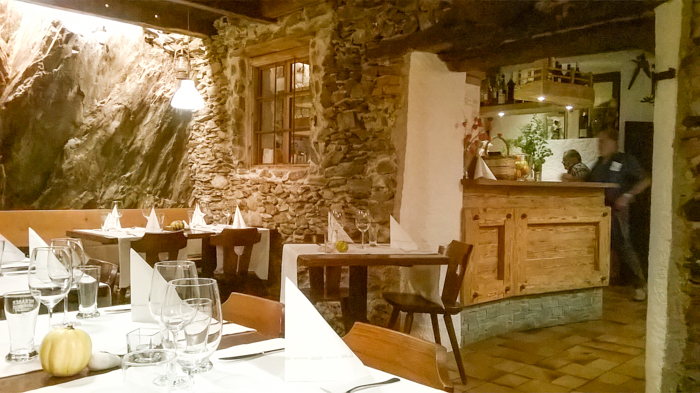
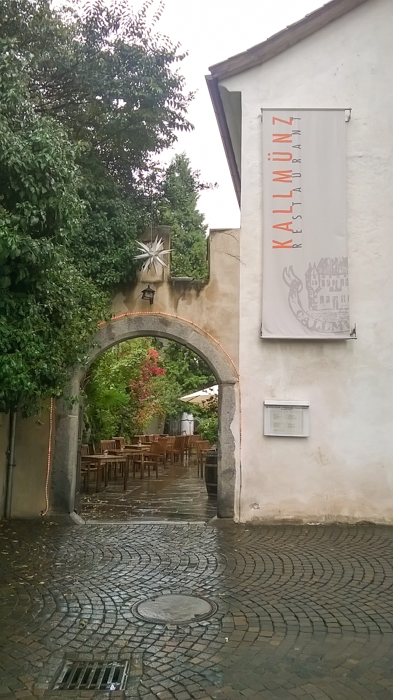
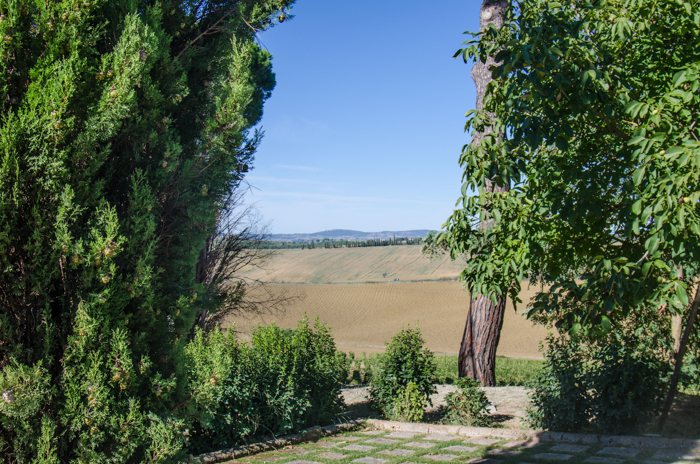 Our
Our 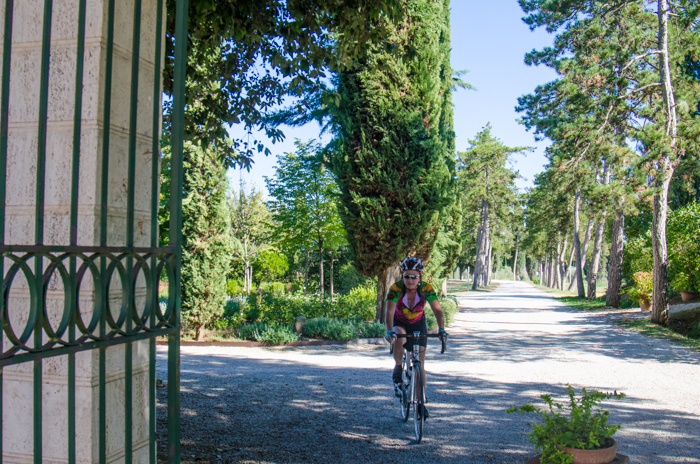
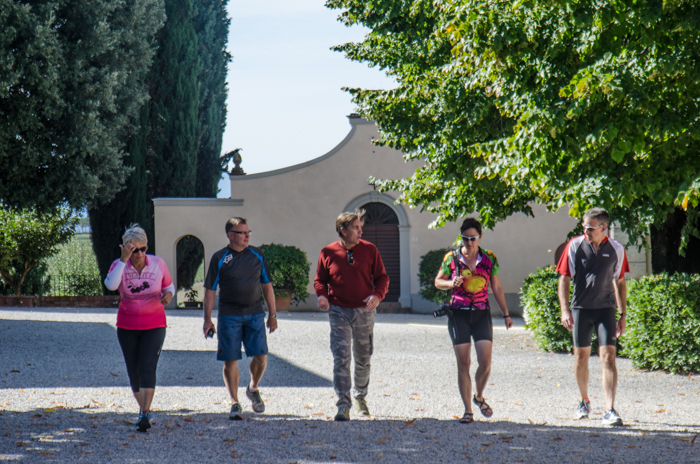
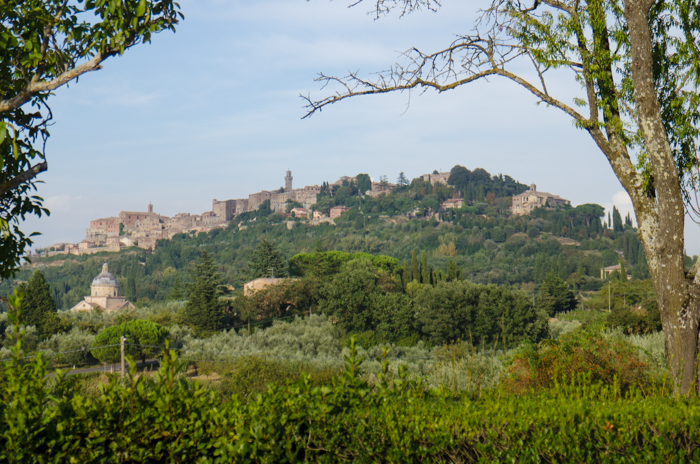
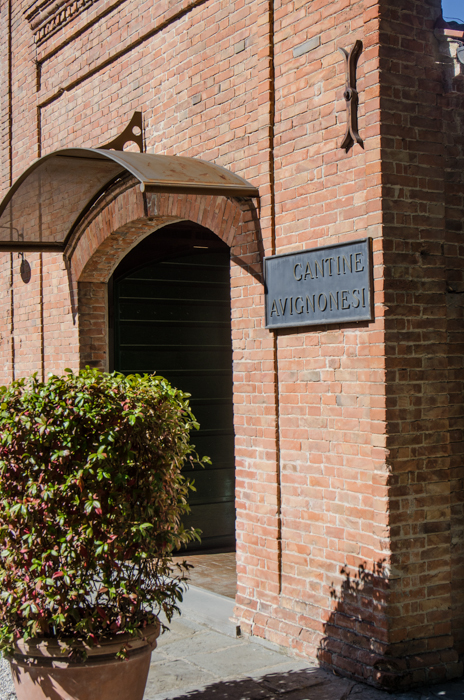 Avignonesi is currently using sustainable farming methods in all 200 hectares of vineyards., and is on track to be granted full organic certification in 2106. But their dedication to natural cultivation does not stop there, they now employ biodynamic farming that integrates local flora and fauna and biodiversity to protect the vine through strengthening its natural defense system and making its growing habitat as healthy and nourishing as possible. “Green” manure is grown in the rows between the vines, including plants like mustard, vetch, rocket, field beans, and grasses, which are eventually mulched into the soil. While growing, the network of roots loosens the soil, aerating it, making it looser and protecting it against erosion. This biodiversity of flora encourages the proliferation of insects and microorganisms that help the vines to thrive.
Avignonesi is currently using sustainable farming methods in all 200 hectares of vineyards., and is on track to be granted full organic certification in 2106. But their dedication to natural cultivation does not stop there, they now employ biodynamic farming that integrates local flora and fauna and biodiversity to protect the vine through strengthening its natural defense system and making its growing habitat as healthy and nourishing as possible. “Green” manure is grown in the rows between the vines, including plants like mustard, vetch, rocket, field beans, and grasses, which are eventually mulched into the soil. While growing, the network of roots loosens the soil, aerating it, making it looser and protecting it against erosion. This biodiversity of flora encourages the proliferation of insects and microorganisms that help the vines to thrive.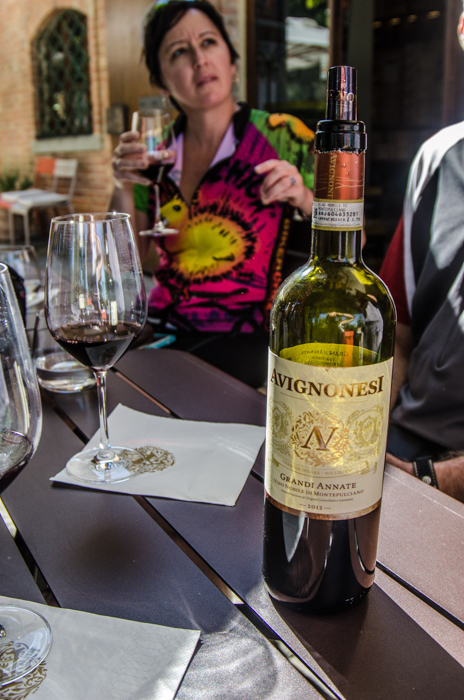 Grandi Annati Vino Nobile di Montepulciano
Grandi Annati Vino Nobile di Montepulciano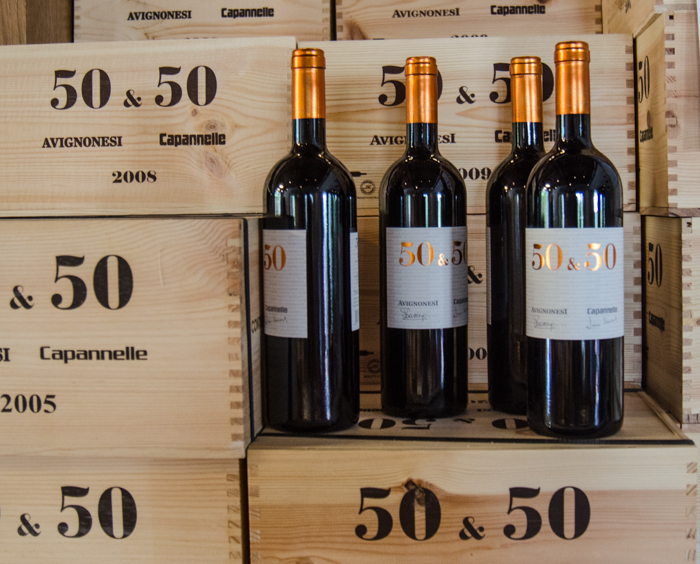 50&50
50&50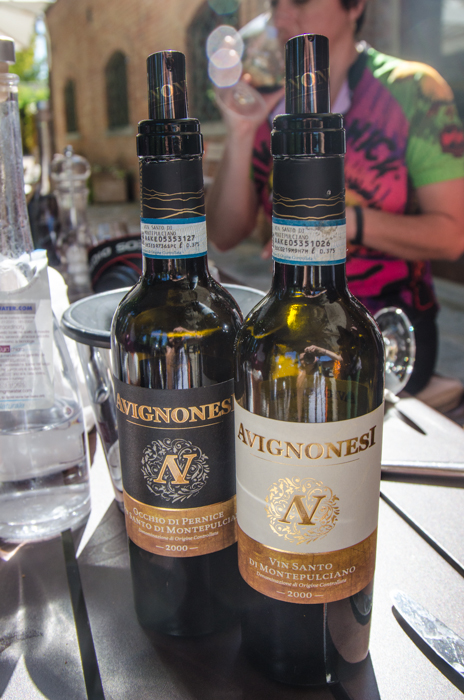 Vin Santo di Montepulciano 2000 and Occhio di Pernice 2000
Vin Santo di Montepulciano 2000 and Occhio di Pernice 2000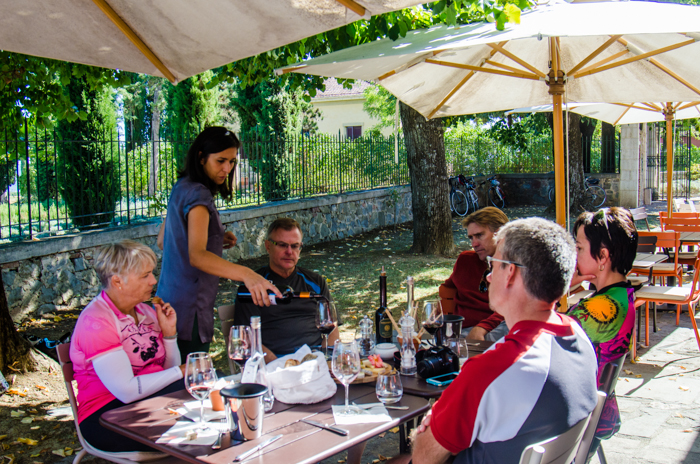
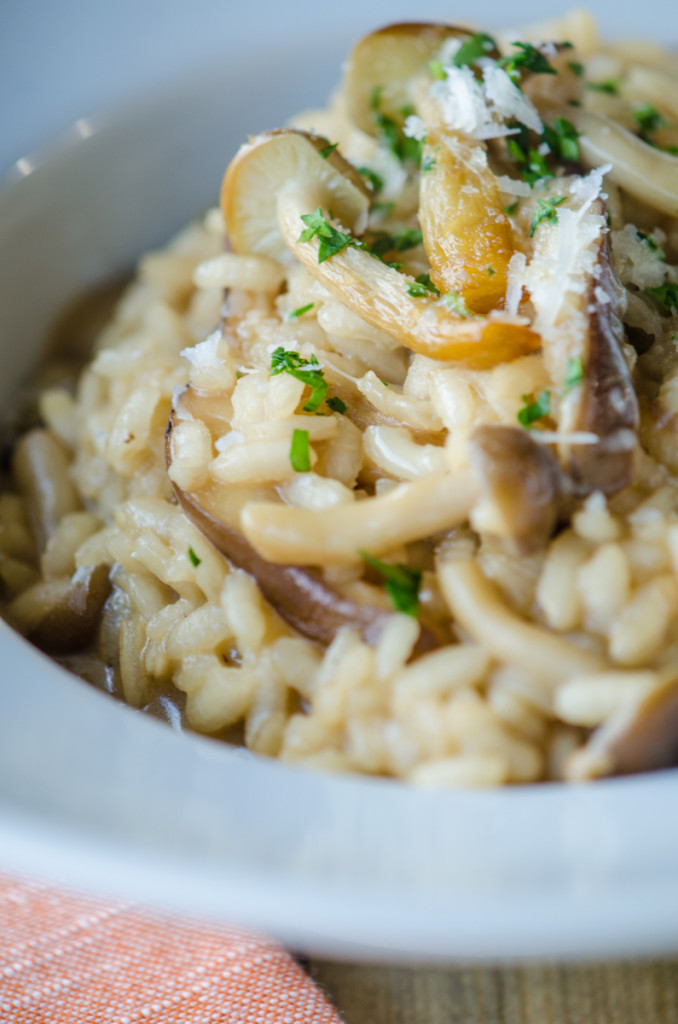 On our late summer and fall tours, whether we are
On our late summer and fall tours, whether we are 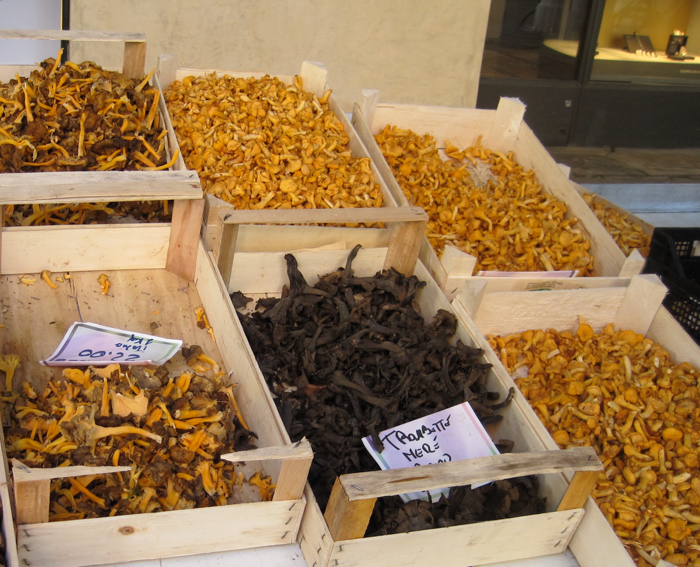 Mushrooms, found wild in the forests, are used in the cuisines throughout Italy, from
Mushrooms, found wild in the forests, are used in the cuisines throughout Italy, from 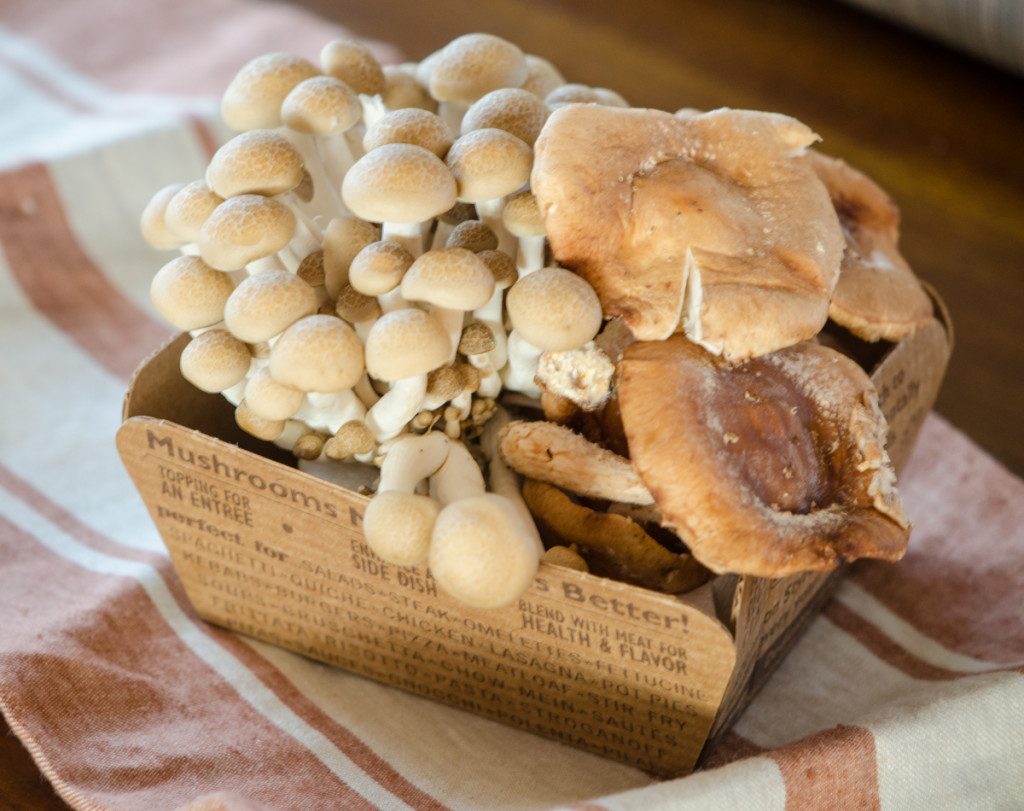 Due to the limited growing season of the wild varieties, their availability was limited until the French developed methods to cultivate them. In the late 1800s, entire families from Venice traveled to France to work in the mushroom farms in the caves near Paris, and learn these techniques. These families returned to the Veneto and began their own mushroom farms. These first farms were located in the caves around Costozza, as these possessed the optimum humidity and temperature for mushroom growth.
Due to the limited growing season of the wild varieties, their availability was limited until the French developed methods to cultivate them. In the late 1800s, entire families from Venice traveled to France to work in the mushroom farms in the caves near Paris, and learn these techniques. These families returned to the Veneto and began their own mushroom farms. These first farms were located in the caves around Costozza, as these possessed the optimum humidity and temperature for mushroom growth.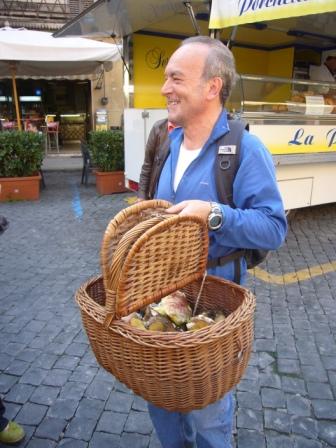
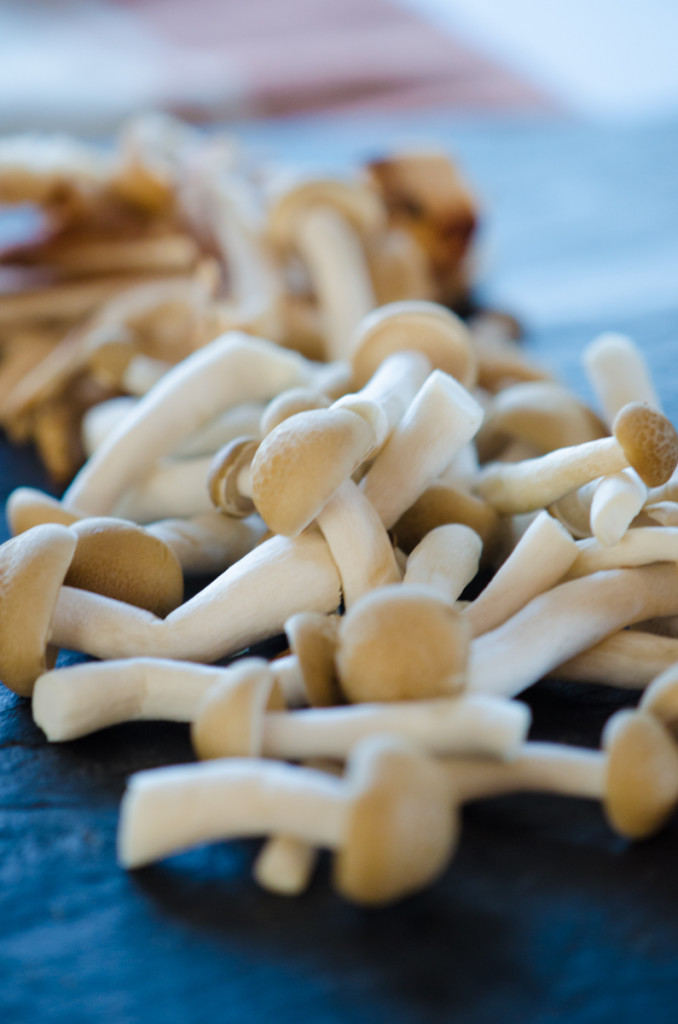 Risotto con Gallinaci Freschi
Risotto con Gallinaci Freschi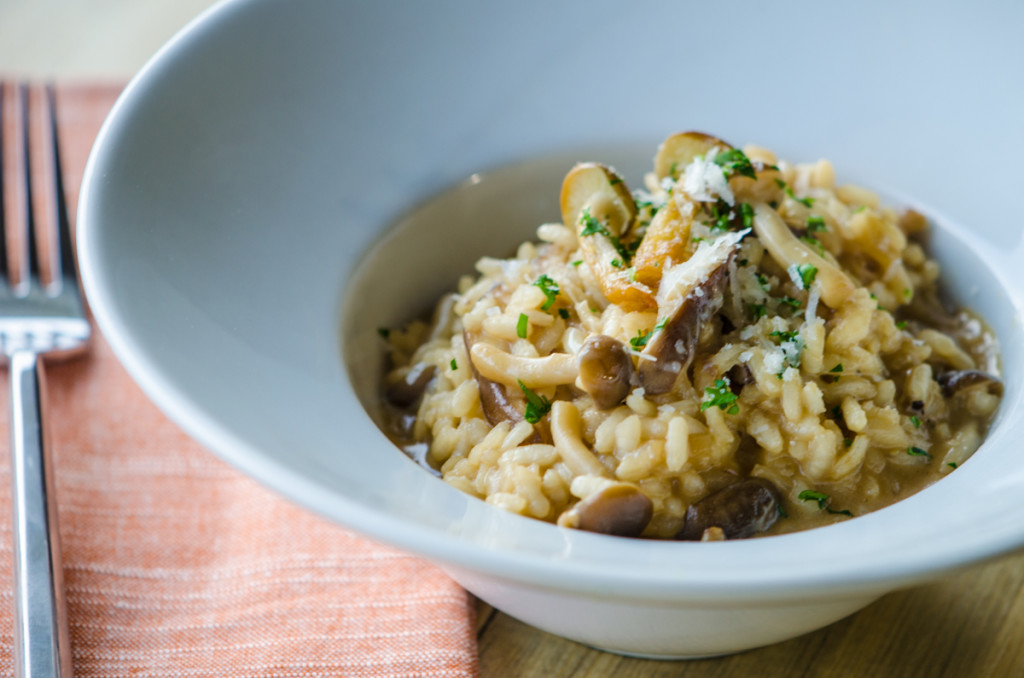
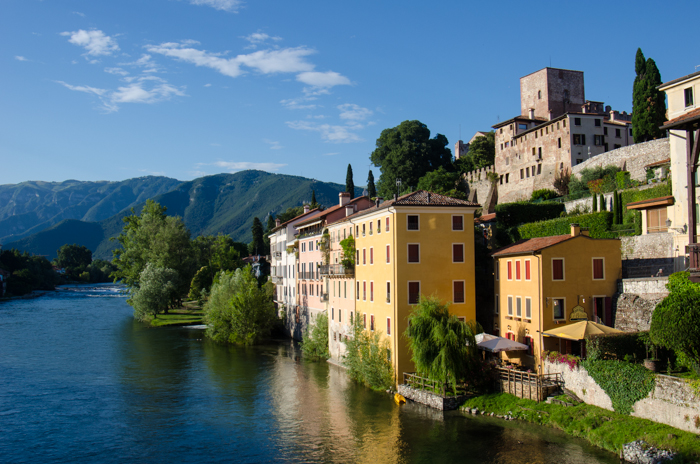 Bassano del Grappa
Bassano del Grappa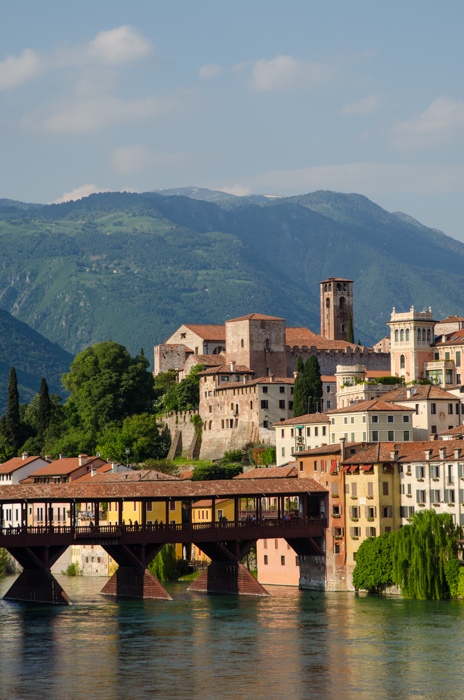 First colonized by the Romans around the 2nd century, the name Bassano comes from the Roman family Bassianus who began an agricultural estate here. Throughout history, the town survived rulers from all sides – first Vicenza, then a period as a free commune under the Ezzelino family, renowned for their cruelty, followed by Milan, Venice, and eventually becoming part of the newly unified Kingdom of Italy in 1866.
First colonized by the Romans around the 2nd century, the name Bassano comes from the Roman family Bassianus who began an agricultural estate here. Throughout history, the town survived rulers from all sides – first Vicenza, then a period as a free commune under the Ezzelino family, renowned for their cruelty, followed by Milan, Venice, and eventually becoming part of the newly unified Kingdom of Italy in 1866.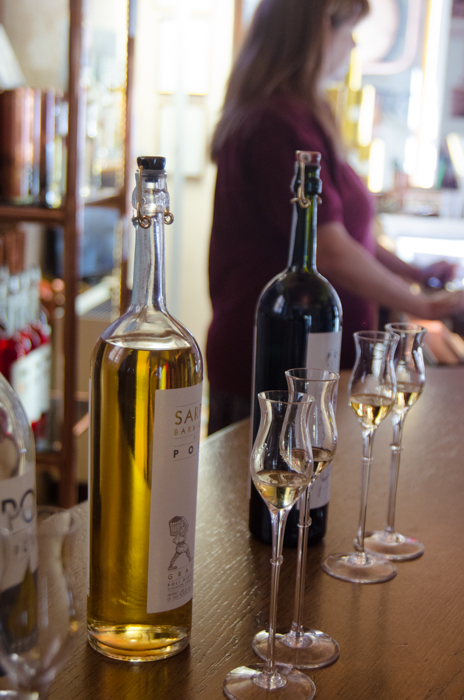 Originally the town was known as Bassano Veneto. The artist Jacopo Bassano lived most of his life in this town, and took it as his last name. The town is also famous for the renowned Italian digestif,
Originally the town was known as Bassano Veneto. The artist Jacopo Bassano lived most of his life in this town, and took it as his last name. The town is also famous for the renowned Italian digestif, 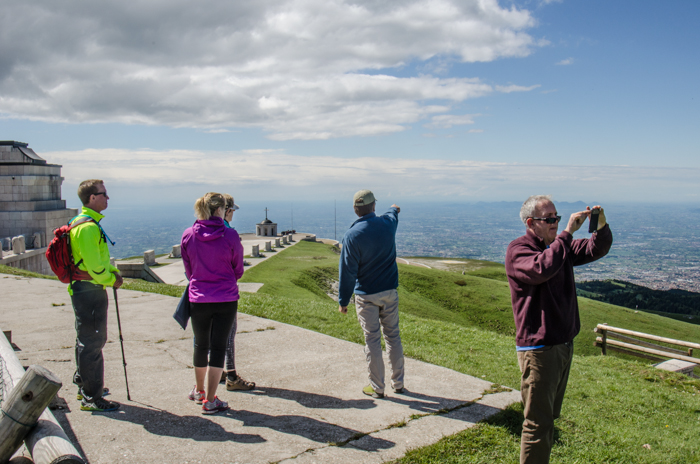
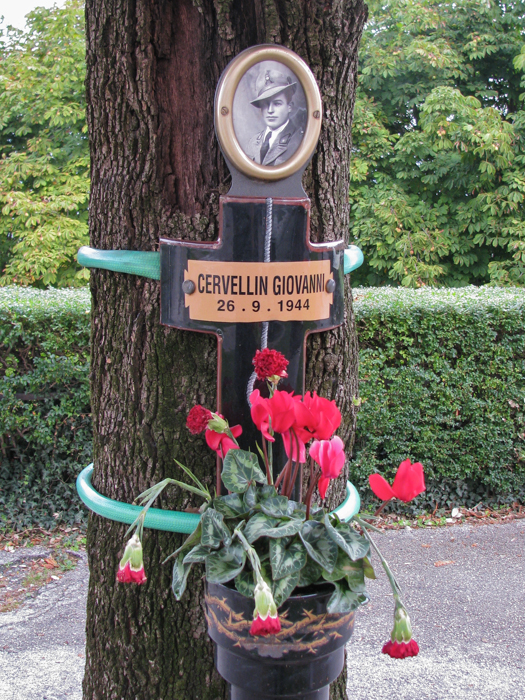 In World War II, after the Armistice, the city was invaded by German troops, who killed or deported numerous inhabitants. Memorials to these fallen heroes line a row of trees just outside the old town center. The most famous symbol of the town is the beautiful covered pontoon bridge, designed by famed architect Andrea Palladio in 1569. This bridge has been destroyed many times, most recently during World War II. The Alpine soldiers raised money and paid for the rebuilding of the bridge, known as the Ponte degli Alpini. Other sights to see include the Cathedral, the Palazzo Michieli-Bonato and Palazzo del Municipio, both with frescos by Jacopo Bassano, and the Town Museum with ancient archaeological remains, and works by Canova, Durer, Spagnoletto and Rembrandt.
In World War II, after the Armistice, the city was invaded by German troops, who killed or deported numerous inhabitants. Memorials to these fallen heroes line a row of trees just outside the old town center. The most famous symbol of the town is the beautiful covered pontoon bridge, designed by famed architect Andrea Palladio in 1569. This bridge has been destroyed many times, most recently during World War II. The Alpine soldiers raised money and paid for the rebuilding of the bridge, known as the Ponte degli Alpini. Other sights to see include the Cathedral, the Palazzo Michieli-Bonato and Palazzo del Municipio, both with frescos by Jacopo Bassano, and the Town Museum with ancient archaeological remains, and works by Canova, Durer, Spagnoletto and Rembrandt.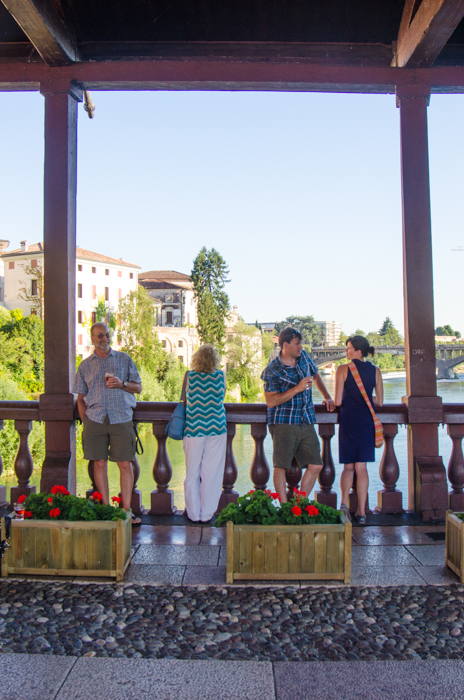
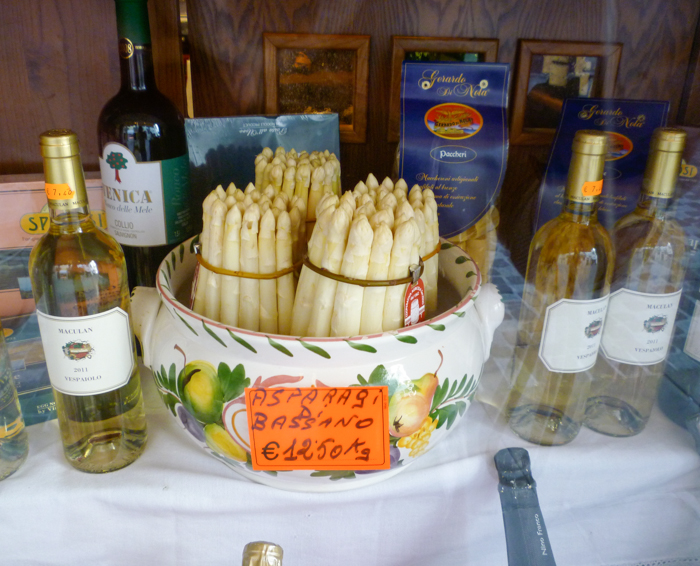 On a recent private bike trip, we were able to enjoy the real thing throughout the week, and made a wonderful, simple roasted white asparagus in one of our cooking classes. But I also found a way to take a little taste of this delicacy home with me; a family producer in Bassano that makes their own canned sauces and pestos called “Specialita in Gamba, Produzione propria e spaccio di conserve aglio e peperoncino”, Production and sale of canned garlic and chili.
On a recent private bike trip, we were able to enjoy the real thing throughout the week, and made a wonderful, simple roasted white asparagus in one of our cooking classes. But I also found a way to take a little taste of this delicacy home with me; a family producer in Bassano that makes their own canned sauces and pestos called “Specialita in Gamba, Produzione propria e spaccio di conserve aglio e peperoncino”, Production and sale of canned garlic and chili.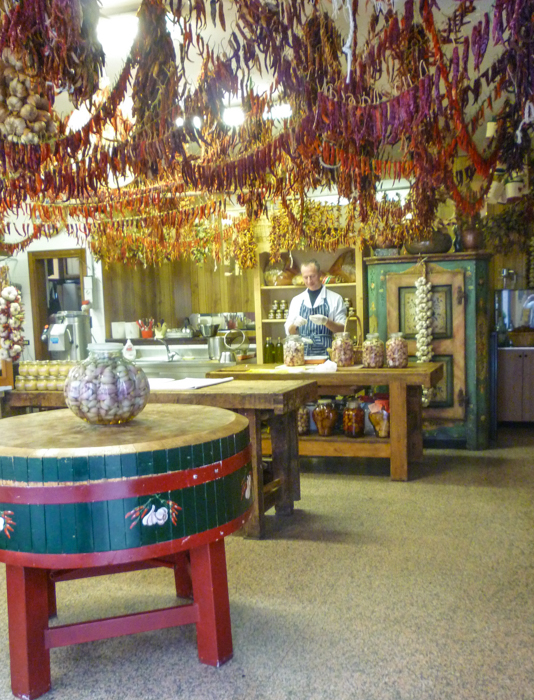 This beautiful shop is right in the center of Bassano, with Mom and Dad preparing the sauces, and the son greeting me and offering me many tastes of their wonderful products. I returned later with our trip guests, and more sampling. They had many tasty sauces; there most popular being AOP (Aglio, Olio e Peperoncino – garlic, oil, and hot peppers), but also a radicchio, a garlic pesto, a horseradish sauce (cren), a sauce for bigoli which I can’t now recall exactly what it contained, and a white asparagus ‘pesto’ which made its way back to the US in my suitcase. They also pickle and preserve whole garlic, shallots, and mixed vegetables. Their products are very attractively displayed on wooden shelves, with strings of dried peppers hanging along the ceiling, and large baskets of garlic and shallots around the store. A leg of prosciutto is on a carving rack, its only purpose to accompany their sauces during tastings. Well worth a stop, and I will be experimenting with my own version of AOP when I return home.
This beautiful shop is right in the center of Bassano, with Mom and Dad preparing the sauces, and the son greeting me and offering me many tastes of their wonderful products. I returned later with our trip guests, and more sampling. They had many tasty sauces; there most popular being AOP (Aglio, Olio e Peperoncino – garlic, oil, and hot peppers), but also a radicchio, a garlic pesto, a horseradish sauce (cren), a sauce for bigoli which I can’t now recall exactly what it contained, and a white asparagus ‘pesto’ which made its way back to the US in my suitcase. They also pickle and preserve whole garlic, shallots, and mixed vegetables. Their products are very attractively displayed on wooden shelves, with strings of dried peppers hanging along the ceiling, and large baskets of garlic and shallots around the store. A leg of prosciutto is on a carving rack, its only purpose to accompany their sauces during tastings. Well worth a stop, and I will be experimenting with my own version of AOP when I return home.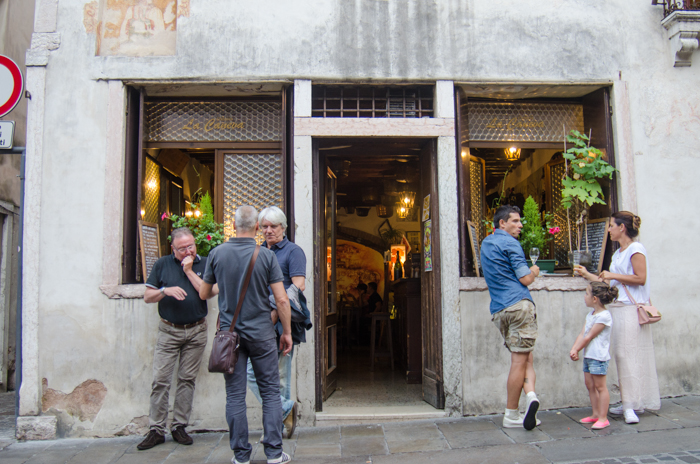
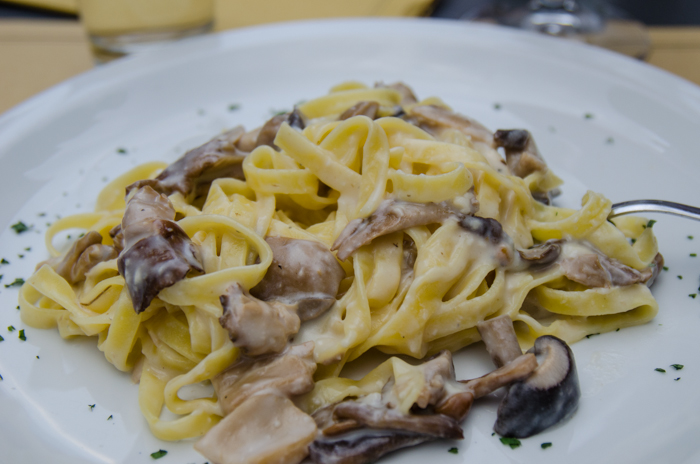 Another restaurant that serves traditional local foods is Antico Ristorante Cardellino on Via Bellavitis. Featuring “La Cucina della Memoria” – cuisine from times past – they use local ingredients including radicchio, white asparagus, asiago cheese and mushrooms in their classic regional dishes. Enjoy the house specialty, baccala vicentina, or bigoli con anatra or risotto con radicchio.
Another restaurant that serves traditional local foods is Antico Ristorante Cardellino on Via Bellavitis. Featuring “La Cucina della Memoria” – cuisine from times past – they use local ingredients including radicchio, white asparagus, asiago cheese and mushrooms in their classic regional dishes. Enjoy the house specialty, baccala vicentina, or bigoli con anatra or risotto con radicchio.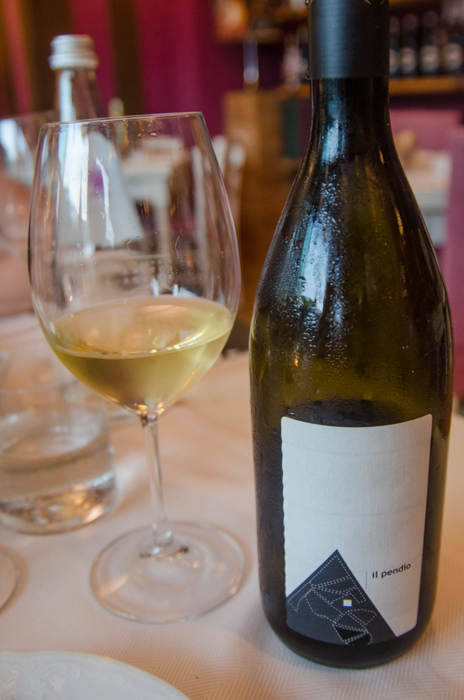 What wines should you try on a visit to Bassano del Grappa? The
What wines should you try on a visit to Bassano del Grappa? The 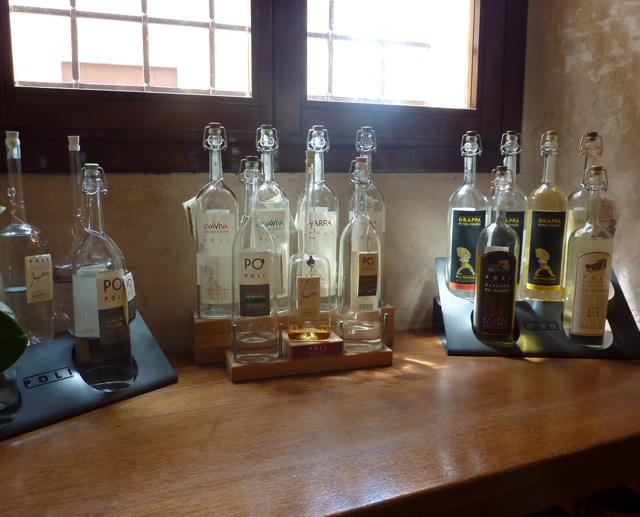
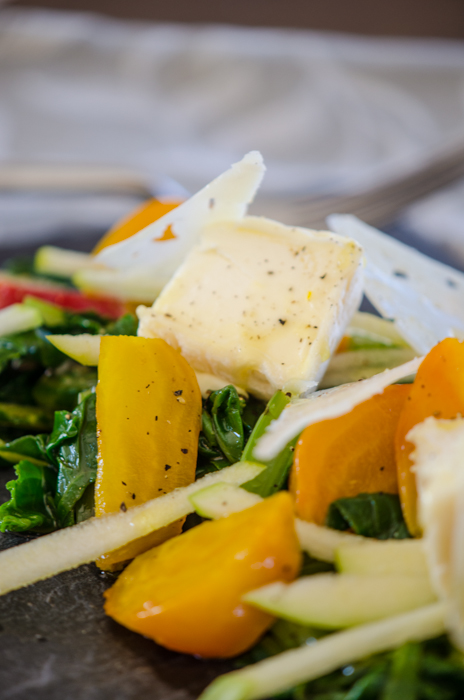 One of my Christmas gifts this year was Lidia Bastianich’s new cookbook, “Lidia’s Mastering the Art of Italian Cuisine”. This is a great addition to my library of Italian cookbooks, with a comprehensive overview of ingredients and techniques. Of course, I couldn’t wait to try it out, and post-holiday I gravitate to lighter fare. The first recipe I tried is Insalata di Barbabietola con Mele e Formaggio di Capra, a beet salad, using both the beet root as well as beet green, apple and goat cheese. The one area I find this cookbook lacking, however, is sharing the diverse nature of Italian cuisine. Italian cuisine is presented as a unified entity rather than an intriguing collection of regional cuisines, each expressing the unique history and culture of a region. On more than one occasion I have overheard a restaurant owner in Italy inform a diner that their request for pesto or grated Parmigiano Reggiano cheese cannot be accommodated – “we don’t serve that here”. All passionate Italian chefs believe their home region’s cuisine is, of course, the best!
One of my Christmas gifts this year was Lidia Bastianich’s new cookbook, “Lidia’s Mastering the Art of Italian Cuisine”. This is a great addition to my library of Italian cookbooks, with a comprehensive overview of ingredients and techniques. Of course, I couldn’t wait to try it out, and post-holiday I gravitate to lighter fare. The first recipe I tried is Insalata di Barbabietola con Mele e Formaggio di Capra, a beet salad, using both the beet root as well as beet green, apple and goat cheese. The one area I find this cookbook lacking, however, is sharing the diverse nature of Italian cuisine. Italian cuisine is presented as a unified entity rather than an intriguing collection of regional cuisines, each expressing the unique history and culture of a region. On more than one occasion I have overheard a restaurant owner in Italy inform a diner that their request for pesto or grated Parmigiano Reggiano cheese cannot be accommodated – “we don’t serve that here”. All passionate Italian chefs believe their home region’s cuisine is, of course, the best!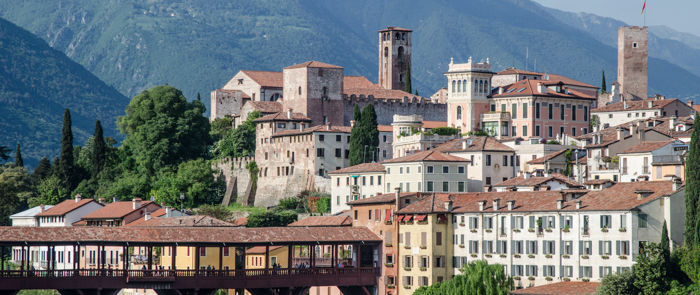 This recipe, if I had to attribute it to an area in Italy, combines products native to the Northern regions. The picturesque town of
This recipe, if I had to attribute it to an area in Italy, combines products native to the Northern regions. The picturesque town of 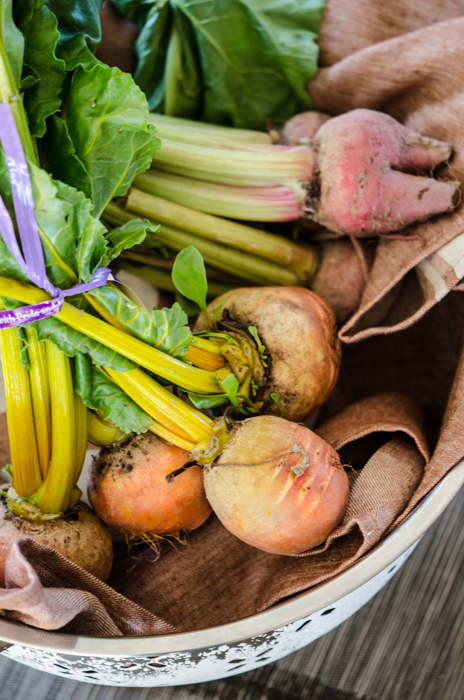 Northeast Italy produces a wide array of apples, from Val Venosta in Alto Adige, Val di Non in Trentino, and also the Veneto and Friuli. But these regions don’t produce much goat cheese – there are many wonderful cheeses here, but made from the milk of cows that flourish in the alpine pastures of these regions. Moving east into Lombardy and then Piedmont, you will find more sheep and goats than cows, especially at lower elevations, and this is reflected in the cheeses – here you will find goat cheese, ewe cheese, and cheeses that combine the milk of two or more.
Northeast Italy produces a wide array of apples, from Val Venosta in Alto Adige, Val di Non in Trentino, and also the Veneto and Friuli. But these regions don’t produce much goat cheese – there are many wonderful cheeses here, but made from the milk of cows that flourish in the alpine pastures of these regions. Moving east into Lombardy and then Piedmont, you will find more sheep and goats than cows, especially at lower elevations, and this is reflected in the cheeses – here you will find goat cheese, ewe cheese, and cheeses that combine the milk of two or more. 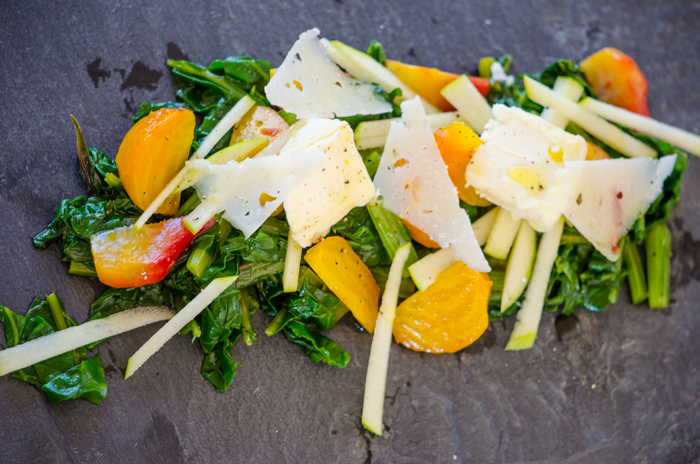 Insalata di Barbabietola con Mele e Formaggio di Capra
Insalata di Barbabietola con Mele e Formaggio di Capra